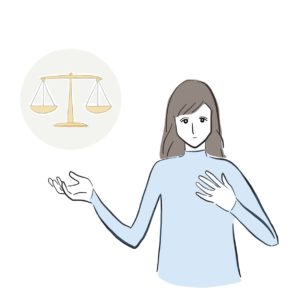Balancing Rights: Involuntary Commitment in Ontario's Mental Health System
Rachel Deshpande

One of the biggest concerns with mental health treatment, which undoubtedly has also been driven by the media and stereotypes, regards the involuntary hospitalization of a mental health patient to a hospital. According to Ontario’s Mental Health Act, involuntary commitment or involuntary admission is the formal process of having a patient held at a psychiatric facility for a specific period of time for psychiatric assessment [1]. To secure the preservation of patient rights, the delivery of sufficient treatment, and the respectful treatment of patients, a comprehensive legal and medical procedure exists for involuntary commitment.
Provincial mental health legislation details how and why patients are admitted into treatment at a facility and various forms of mental health treatment. In Ontario, it is known as the Ontario Mental Health Act, which outlines the rights and responsibilities of authority, patients, physicians, family, and community, and requirements for voluntary and involuntary admission. There are two ways of being admitted involuntarily, but both involve a similar process: involuntary admission requires a certificate of involuntary admission from a physician. You can either be initially involuntarily admitted, or your status can change from voluntary patient to involuntary patient, both with the approval of a physician. [2].
The extensive legal process begins with applying a psychiatric assessment for a patient made by one physician. Another physician must examine the patient and determine from a set of criteria if the patient is unfit to continue as a voluntary patient, the patient is not able to consent to their treatment and their decision maker has approved, the patient is at risk of bodily or mental harm towards themselves or other people, has received treatment in the past and has improved with therapy and deteriorated significantly without treatment, and finally is suffering from a similar/the same mental condition as before and improved with treatment. After assessment, the physician must complete an involuntary admission certificate, a renewal certificate, or a continuation certificate. The physician who completes the assessment application mustn’t be the physician who filed the certificate of involuntary admission [2].
Under the same jurisdictions, a justice of the peace may also prescribe a psychiatric evaluation of the patient, in which a physician would complete the following and further determine if involuntary admission is needed for adequate mental health treatment [2]. This can also be issued if a person is concerned with their friend’s or family’s safety. They can submit an order to their local court for further information. Similarly, if a police officer can determine that someone is at risk of harming themselves or others and if they are living with a mental health disorder, a police officer can take the individual into custody for a psychiatric examination [2].
Once a patient has been admitted, the legal process ensures respect, consent, privacy, and dignity. An involuntary patient can be detained in a psychiatric facility for a maximum of two weeks under the original certificate of involuntary admission. This can be extended by one extra month under the first certificate of renewal, two extra months under the second certificate of renewal, three additional months with a third certificate of renewal, and finally, three extra months with a first or another certificate of continuation [2]. If the patient’s determined time has expired, the patient must change their status to a voluntary patient.
Treatment deters when one is involuntarily committed under the Criminal Code of Canada to ensure public safety. The patient will be treated under the regulations of the Criminal Code, and consent is determined based on the rules outlined in the Health Care Consent Act, ensuring that permission is being obtained and the person’s rights are considered in treatment. A judge, if able to determine that the person lives with a mental health condition and has been charged or convicted of a crime, can sentence the individual to a maximum of two months in the hospital under involuntary admission. Privacy and confidentiality are essential rights handled through the Freedom of Information and Protection of Privacy Act. Communication from outside the hospital should always be unrestricted, viewed/observed by others, or delayed. It can only be limited if the contents of the communication would interfere with the patient’s treatment, be offensive, or cause the patient to have extra stress [2].
Once the certificate of involuntary admission, renewal, or continuation has been filed, the Board must decide regarding the patient’s access. Factors considered are public safety, the patient’s mental health, the hospital’s ability to care for the patient, how to re-integrate the individual into society, and the patient’s other physical, mental, emotional, and spiritual needs. The patient’s capacity is one of the most influential factors regarding involuntary versus voluntary admission and the future of the patient’s estate and finances.
Overall, involuntary admission into a mental health facility in Ontario is a highly regulated process meant to keep the interests of the public in mind while treating the patient as a person and respecting their rights and individual wishes. Access to adequate health care services at the first signs and symptoms is lacking throughout Canada’s health care system and mental health support. By diminishing the stigma surrounding mental health and improving accessibility to mental health resources, we can lessen the future necessity and request for involuntary admissions, thereby fostering a society that prioritizes healthcare [3].
Reference List
[1] PsychDB. (2023, January 3). Mental Health Act (ON). PsychDB. https://www.psychdb.com/teaching/on/mha/home
[2] https://www.ontario.ca/laws/statute/90m07
[3] Gandy H. (2004). Form 1 – A powerful and complex tool for managing mental health problems. Paediatrics & child health, 9(4), 222–224. https://doi.org/10.1093/pch/9.4.222
- Login
- Sign Up